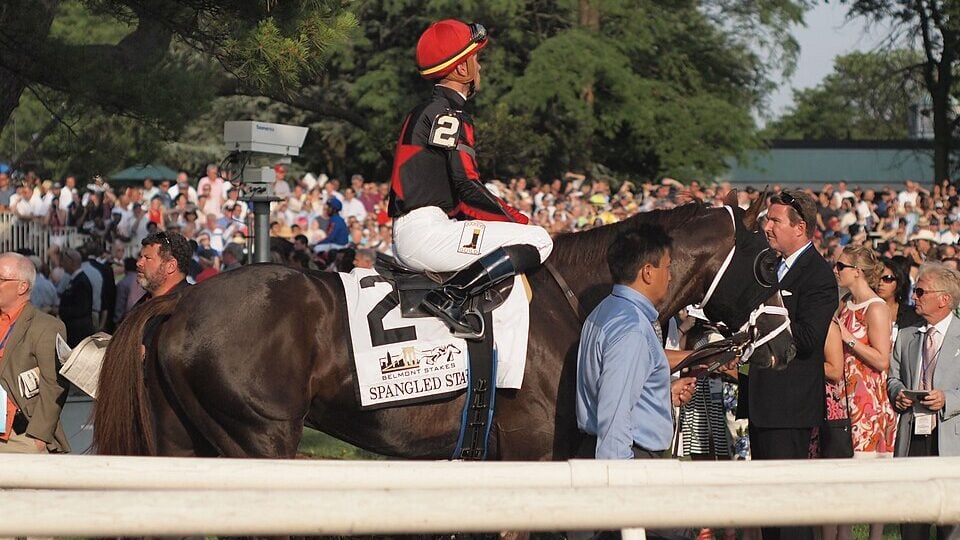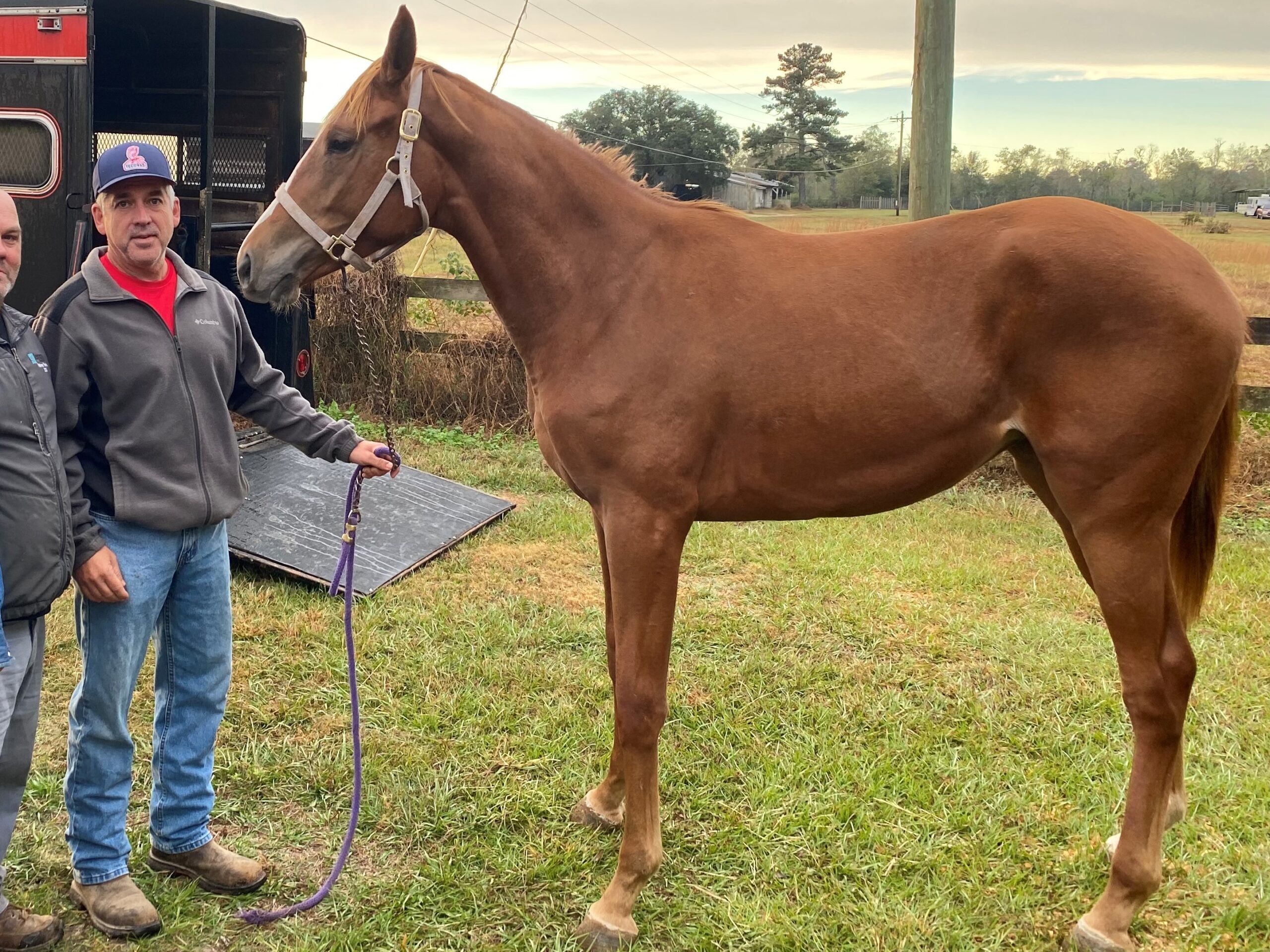Published on: April 1, 2025
The Belmont Stakes, the final jewel in the Triple Crown, traditionally tests three-year-old thoroughbreds over a grueling 1 1/2 miles at Belmont Park, demanding both stamina and strategic acumen. For the 2025 edition, however, the race shifts to Saratoga Race Course and shortens to 1 1/4 miles, introducing new dynamics that will significantly impact handicapping.
Drawing on my experience as a long-time racehorse owner and through studying the history of the Belmont Stakes, I created this guide to help you refine your Belmont Stakes Strategy. Whether analyzing the traditional distance or adapting to the shorter Saratoga configuration, this report explores the critical factors that can influence race outcomes and fine-tune your betting decisions.

🎯 The Starting Gate and Beyond: Post Position Impact at 1 1/2 Miles and 1 1/4 Miles
Post position plays a pivotal role in determining success in the Belmont Stakes. At Belmont Park’s traditional 1 1/2-mile distance, certain post positions have demonstrated a higher propensity for producing winners.
Key Insights from Historical Data:
- Post 1: The rail has yielded 24 winners, the most of any position, with a win rate of 20.5%. However, since 2003, only one horse—Justify in 2018—has triumphed from the inside post. (TwinSpires)
- Middle Posts (3 and 5): These posts have produced 16 and 15 winners, respectively, showcasing strong historical performance.
- Post 10 and Beyond: Horses starting from outside posts have struggled, with only one winner emerging from post 10 in 39 attempts.
Why Inside Posts Historically Perform Better
Horses starting on the inside have a shorter distance to the first turn, allowing them to secure a favorable early position while conserving energy. Conversely, wide draws require horses to cover more ground, particularly on Belmont’s expansive oval. This additional distance can deplete a horse’s stamina reserves, especially in a race known for its punishing length.
Saratoga’s Venue Change: A New Dynamic
With the Belmont Stakes relocating to Saratoga Race Course and shortening to 1 1/4 miles, post position dynamics shift. Saratoga’s tighter turns and shorter distance make early positioning more critical. Insights from the Travers Stakes (1 1/4 miles) suggest that:
- Posts 4 through 7 have shown higher win percentages, giving middle posts an advantage.
- Horses securing favorable early positions tend to maintain their lead better due to the tighter turns at Saratoga. (America’s Best Racing)

✅ Pro Tip: For the 2025 Belmont Stakes at Saratoga, favor horses starting from posts 4 to 7. These positions have historically performed well in the Travers Stakes and may provide a tactical edge in the 1 1/4 mile configuration.
Historical Belmont Stakes Winners by Post Position (Belmont Park Data)
| Post Position | Starts | Wins | Win % | Wins Since 2000 | Last Winner |
|---|---|---|---|---|---|
| 1 | 117 | 24 | 20.5% | 2 | Justify (2018) |
| 2 | 117 | 13 | 11.1% | 2 | Essential Quality (2021) |
| 3 | 115 | 16 | 13.9% | 4 | Arcangelo (2023) |
| 4 | 109 | 10 | 9.2% | 2 | Summer Bird (2009) |
| 5 | 101 | 15 | 14.9% | 2 | American Pharoah (2015) |
| 6 | 96 | 8 | 8.3% | 1 | Mo Donegal (2022) |
| 7 | 83 | 14 | 16.9% | 3 | Sir Winston (2019) |
| 8 | 73 | 7 | 9.6% | 2 | Tiz the Law (2020) |
| 9 | 56 | 4 | 7.1% | 2 | Afleet Alex (2005) |
| 10 | 39 | 1 | 2.6% | 0 | Thunder Gulch (1995) |
📚 The Tale of Running Styles: Closers vs. Speed Horses
Understanding a horse’s preferred running style is critical when handicapping the Belmont Stakes. Horses typically fall into one of three categories:
- Frontrunners: Aim to secure an early lead and try to maintain it throughout the race. Frontrunners excel in shorter distances but often struggle over the 1 1/2 mile Belmont due to the stamina demands. (BloodHorse)
- Stalkers: Positioned just behind the leaders, stalkers conserve energy early and make their move in the latter stages. Historically, stalkers have been the most successful running style at Belmont, capitalizing on their stamina to overtake tiring frontrunners.
- Closers: Lag behind the early pace, relying on a late surge to contend in the final furlongs. However, deep closers often face an uphill battle at Belmont, where the pace rarely collapses enough to facilitate their late rallies.
Historical Trends: Stalkers Dominate at 1 1/2 Miles
The demanding length of the Belmont Stakes favors stalkers who maintain a close position to the leaders without expending too much early energy. Horses such as Sir Winston (2019) and Mo Donegal (2022) exemplify how this strategy leads to success. (TwinSpires)
Personal Insight on Running Styles: I once had a filly who loved to take the lead early and control the pace. She dominated shorter races, but her front-running style didn’t hold up when I entered her in a 1 1/8-mile race at the Fair Grounds.
Despite leading comfortably, she was caught in the stretch by a stalker and finished second. That race taught me an important lesson—stalkers excel in longer races by conserving energy early and making a strong move late. I’ve applied this to my handicapping, and it’s paid off many times.

🎯 The Jockey’s Art: Preserving Stamina Over the Belmont’s Lengthy Trip
The role of the jockey in the Belmont Stakes, particularly in managing a horse’s stamina, cannot be overstated. Expert insights emphasize the importance of understanding a horse’s running style and adjusting tactics accordingly. A skilled jockey knows when to push their mount forward and when to conserve energy for the final stretch—critical in a race like the Belmont where stamina often decides the outcome.
Pace Judgment and Positioning: Key to Success
Pace judgment is essential in the Belmont Stakes. Experienced riders gauge the speed and position their horses to save ground while avoiding traffic. Inside post positions, although historically advantageous, can be risky if a horse gets trapped along the rail or boxed in by other contenders. A clean break from the gate and securing a favorable position early can significantly impact the horse’s chances of success. (BloodHorse)
A Lesson in Jockey Patience: I’ve seen firsthand how the right jockey can change the outcome of a race. One of my fillies, entered in a claiming race at Fair Grounds, had a strong chance of winning, but her jockey moved too soon, and she ran out of gas in the final furlong.
That experience reinforced how patience and timing, especially in longer races, can be the difference between winning and finishing off the board. Later, when I used a more experienced jockey, his patience in waiting for the right moment led to a decisive stretch run that secured a victory.
🔥 Synthesizing Strategy: Integrating Pace, Distance, and Positioning for Belmont Success
Success in the Belmont Stakes hinges on a delicate balance of pace, distance, and positioning. A horse’s post position can significantly impact its ability to establish a preferred running style early in the race. Inside posts generally favor frontrunners seeking to secure an early lead, while outside posts may benefit closers looking to avoid early traffic. However, middle posts (4–7) have proven advantageous at Saratoga’s 1 1/4 mile distance, offering an ideal balance for stalkers with tactical speed.
✅ Pro Tip: For the 2025 Belmont Stakes at Saratoga, prioritize horses with tactical speed from middle posts. These positions provide the flexibility to adjust to the pace scenario, which is critical given the tighter turns and shorter stretch.

Frequently Asked Questions About Betting on the Belmont Stakes
How does Saratoga’s shorter distance change the importance of early speed?
At 1 1/4 miles, early speed becomes more critical. Horses that can secure a favorable position early are less likely to be caught in traffic and are better positioned to maintain their lead through Saratoga’s tighter turns.
Which post positions are most advantageous at Saratoga for the Belmont Stakes?
Historically, post positions 4 through 7 have shown higher win percentages at Saratoga in 1 1/4 mile races, offering an ideal balance between securing early position and avoiding traffic.
Will closers still have a chance to win the Belmont at Saratoga?
Closers face a tougher challenge at Saratoga due to the shorter distance and tighter turns. Without a fast early pace to tire out frontrunners, deep closers may struggle to make up ground in the final stretch.
Does jockey experience at Saratoga matter more now that the race has moved?
Yes, jockeys familiar with Saratoga’s unique track configuration have an advantage. Their knowledge of when to move and how to position their horse effectively can make a critical difference in a shorter, faster-paced race.
Should I weigh historical Belmont Park data differently now that the race is at Saratoga?
Yes, historical Belmont Park data, especially related to post positions and running styles, should be viewed with caution. Saratoga’s shorter distance and different track configuration introduce variables that can significantly alter historical trends.

🏁 Conclusion: Sharpening Your Belmont Stakes Edge
Mastering your Belmont Stakes strategy requires an in-depth understanding of how post position, running style, and jockey tactics intersect over this grueling race. While historical trends at Belmont Park once favored inside posts, recent results and the temporary move to Saratoga’s 1 1/4 mile distance place a greater emphasis on early positioning and tactical speed.
By carefully assessing each horse’s running style and factoring in the likely pace scenario, you can significantly improve your handicapping accuracy. Horses with tactical speed, paired with experienced jockeys who understand how to manage stamina through Saratoga’s tighter turns, will have an edge in this year’s race. I’ve personally witnessed how a well-timed move at the top of the stretch can exploit tiring frontrunners—turning a close race into a winning ticket.
🎯 Further Reading for Strategic Insights:
- Explore my Kentucky Derby Strategy Guide for an in-depth look at post positions and pace.
- Dive into my Preakness Stakes Strategy for additional insights on jockey tactics and post positions.
📚 Explore More on Major Races:
- Learn about The 13 Biggest Horse Races in the U.S. and The Most Popular Horse Races in the World.
- For official race information, visit the Belmont Stakes page or Preakness Stakes website.
📩 Get Exclusive Insights Straight to Your Inbox!
Stay ahead of the game—sign up for our newsletter at HorseRacingSense.com to receive expert betting tips and detailed race analysis.

About the Author: Miles Henry
Lifelong Horseman | Racehorse Owner | Published Author
Miles Henry brings over 25 years of hands-on experience training and owning Thoroughbred racehorses. Raised with Quarter Horses and Appaloosas, he’s spent a lifetime learning from horses—on the track, in the barn, and in the field. Today, he runs a small but successful racing stable in Louisiana and shares real-world insights on HorseRacingSense.com, helping horse owners, fans, and bettors navigate the sport with confidence.
📚 Books: View Miles’s books on Amazon »
🎧 Podcast Guest: Animal Tales Ep. 32 |
YouTube Interview
📩 Newsletter: Sign up for racing tips and horse care advice »
🔗 Follow Miles:
Twitter |
Facebook |
YouTube

